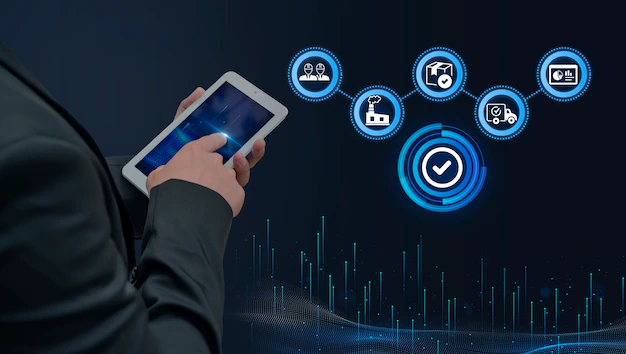Elevate Your Procurement Strategy With Digital Category Management
by Abdul Aziz Mondal Technology Published on: 14 December 2023 Last Updated on: 16 December 2023

In today’s dynamic business landscape, procurement plays a pivotal role in driving organizational success. Digital-Category Management is the answer.
To manage procurement processes effectively and optimize value creation, organizations are adopting digital category management as a strategic approach.
What Is Category Management?
Before we dive into digital category management, let’s just say a few lines on category management. It will serve to benefit the readers with base-level knowledge of it.
Category management is a strategic approach through which you can manage spending within the business. Moreover, it helps the management establish an alignment between the business objectives and the supplier’s capability. It is a system that helps the organization comprehend its spending on acquisitions.
Moreover, the company can understand the pattern of acquisition across the different categories and services.They also develop source strategies that go well with the objectives of the business. Finally, they negotiate the contracts that help deliver the optimal value.
What is Digital Category Management?
Digitalization in the field of managing the categories. It enables businesses to work with cross-function on specific categories so that it helps examine the entire marketplace, category spend, and suppliers. So, to achieve maximum efficacy, the management of the category needs to be continuously embedded in processes that are supported by digitized solutions and procurement leadership.
Benefits of Digital Category Management
Digitized category management possesses multiple benefits, and looking at its efficacy, Hence, organizations of diverse sizes are using them effectively. They are reaping the benefits iof it. However, it lets us understand some of the benefits of digital category management.
- Digital Category Management (DCM) offers a multitude of benefits that can transform procurement operations and drive business growth. However,here are some of the key advantages:
- Enhanced Efficiency: DCM tools automate repetitive tasks, streamline workflows, and provide real-time insights, leading to significant time savings and improved efficiency.
- Reduced Costs: DCM facilitates better supplier negotiations, identification of cost-saving opportunities, and optimization of procurement processes. Ultimately, it results in substantial cost reduction.
- Strengthened Supplier Relationships: DCM fosters stronger relationships with suppliers. It leads to improved communication, collaboration, and performance.
- Improved Data Visibility: DCM provides a centralized platform for storing, analyzing, and reporting procurement data. It also enables informed decision-making.
- Strategic Procurement Value: DCM elevates procurement from a transactional function to a strategic contributor to business objectives, driving value creation across the organization.
The Importance of a Thorough Implementation Program

To reap the full benefits of Digital Category Management, organizations need to implement a comprehensive and well-structured program.
This involves several key phases:
- Assessment and Planning: Evaluate the current procurement landscape and identify areas for improvement. It also helps develop a comprehensive digitalization strategy aligned with business goals.
- Tool Selection and Procurement: Choose the most suitable digital tools and platforms that integrate seamlessly with existing systems and cater to the organization’s specific needs.
- Process Reengineering: Analyze and optimize procurement processes, eliminating redundancies, automating tasks, and streamlining workflows.
- Data Collection and Analysis: Establish a robust data collection process and utilize advanced analytics to gain valuable insights into procurement data.
- Training and Change Management: Provide comprehensive training to procurement teams and stakeholders to ensure a smooth transition to the new digitalized system.
- Continuous Improvement: Implement a continuous improvement cycle to monitor the performance of the implementation and make adjustments as needed.
Understanding The Procurement Challenges That Haunt Your Business
Procurement has its divest challenges and they are the ones that trouble businesses of different scales.
The supply risks are one of the major challenges an organization faces in the procurement process. Quality costs, potential frauds, market risks, and delivery risks remain prime challenges the organization faces.
The other core challenges to procurement include dark purchasing, lack of transparency, inaccurate data, and failure to embrace new technology. The digitized category management is one of the measures that haunt the organization.
Sourcing Champions: Your Partner in Digital Category Management
Sourcing Champions is a leading procurement consulting firm that provides expert guidance and support in implementing the Management. With a team of experienced consultants and a deep understanding of the latest Digital Category Management technologies, Sourcing Champions can help organizations effectively adopt Digital Category Management and achieve their desired outcomes.
Cirtuo: A Powerful Solution for Digital Category Management
Sourcing Champions is partnered with Cirtuo, a leading provider of Category Management software. Cirtuo’s Guided Strategy Creation™ technology enables organizations to develop, validate, and implement category strategies efficiently. Cirtuo provides a comprehensive platform for managing procurement data, analyzing trends, and driving informed decision-making.
In today’s competitive landscape, digital category management strategy is a game-changer for procurement. By harnessing the power of Digital Category Management, organizations can optimize processes, reduce costs, and enhance supplier relationships, leading to significant business benefits.
Sourcing Champions are your trusted partners in this journey, providing the expertise and technology to elevate your procurement strategy and drive organizational success.
Read Also:



































































































